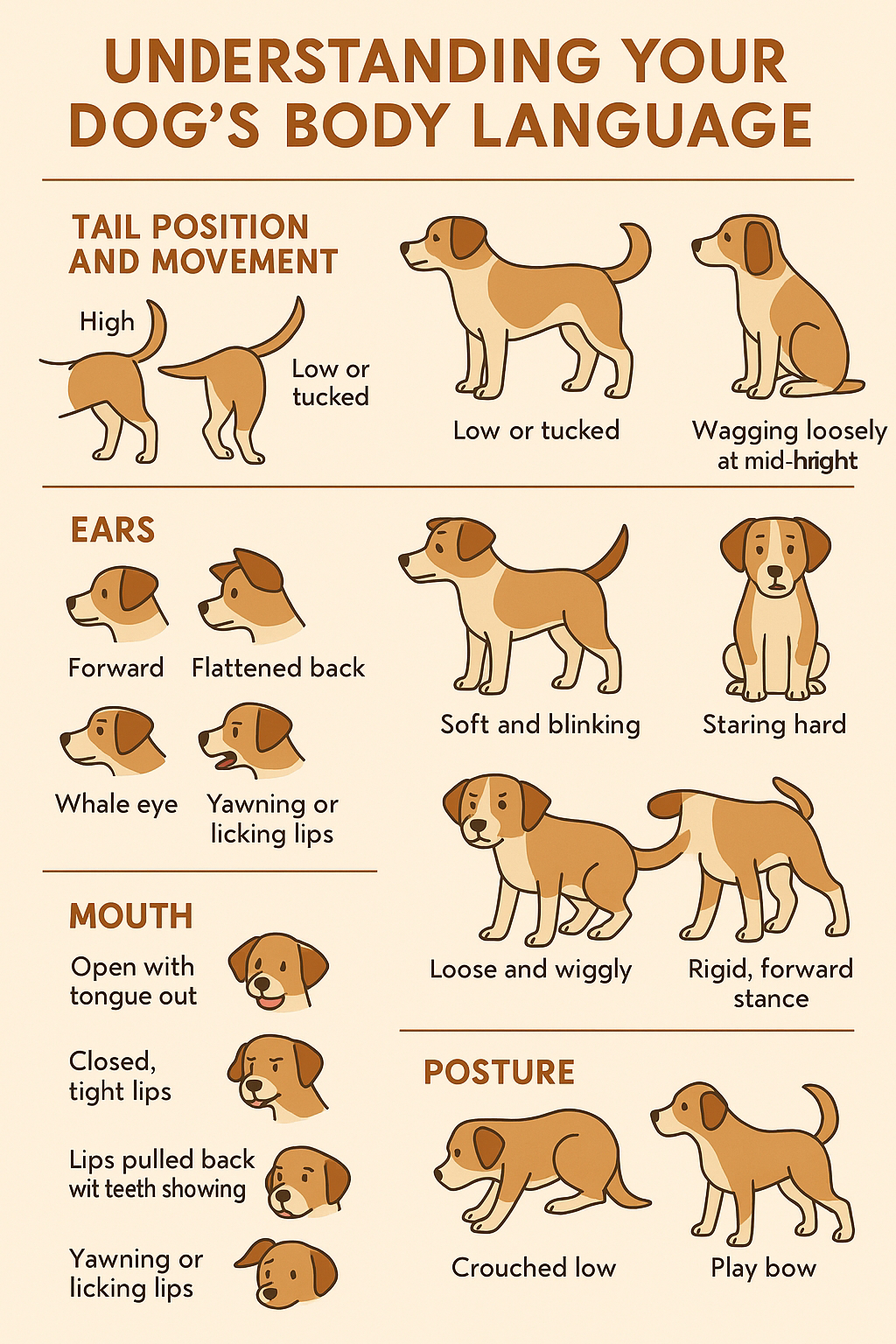Barking is one of your dog’s main forms of communication. Whether it’s joyful, fearful, alert, or just plain bored—your dog is trying to tell you something. The key is figuring out what they’re saying and how to respond appropriately—especially when barking becomes excessive.
🐶 The 5 Common Types of Barking
-
Alert Barking – “Hey! Someone’s at the door!”
Usually sharp and sudden, alert barking is triggered by sights or sounds like the mail carrier or a passing dog. -
Fear Barking – “I’m scared, back off!”
This barking is often accompanied by a lowered body, tucked tail, or backing away. It’s your dog’s defense system in action. -
Boredom Barking – “I have nothing to do!”
Repetitive, often monotone barking that happens when your dog is left alone without mental or physical stimulation. -
Excitement Barking – “Let’s go! I can’t wait!”
Common during play, walks, or when greeting people. It’s high-pitched, fast, and full of energy. -
Demand Barking – “Give me that treat. Now.”
This is learned behavior—your dog barks because it gets them what they want.
🛠️ How to Handle Excessive Barking
🔍 Step 1: Identify the Cause
Watch your dog. What’s happening when the barking starts? Look at body language and environment—those are your clues.
🧠 Step 2: Redirect, Don’t Punish
Never punish a dog for barking. Instead, redirect their attention. Teach a "quiet" cue and reward calm behavior.
🎾 Step 3: Meet Their Needs
A bored dog is a loud dog. Daily exercise, puzzle toys, sniff walks, and social interaction can dramatically reduce barking.
🚪 Step 4: Control the Environment
Cover windows if your dog barks at people outside. Use white noise, leave a TV on, or create a safe den-like space when you’re not home.
🐕🦺 Step 5: Seek Help When Needed
If barking is linked to anxiety or fear, a professional trainer or behaviorist can help you work through it with kindness and structure.
🌿 Remember:
Barking is natural. Your job isn’t to silence your dog—but to help them feel secure, heard, and properly stimulated. With consistency and compassion, you can reduce excessive barking and strengthen your bond at the same time.



